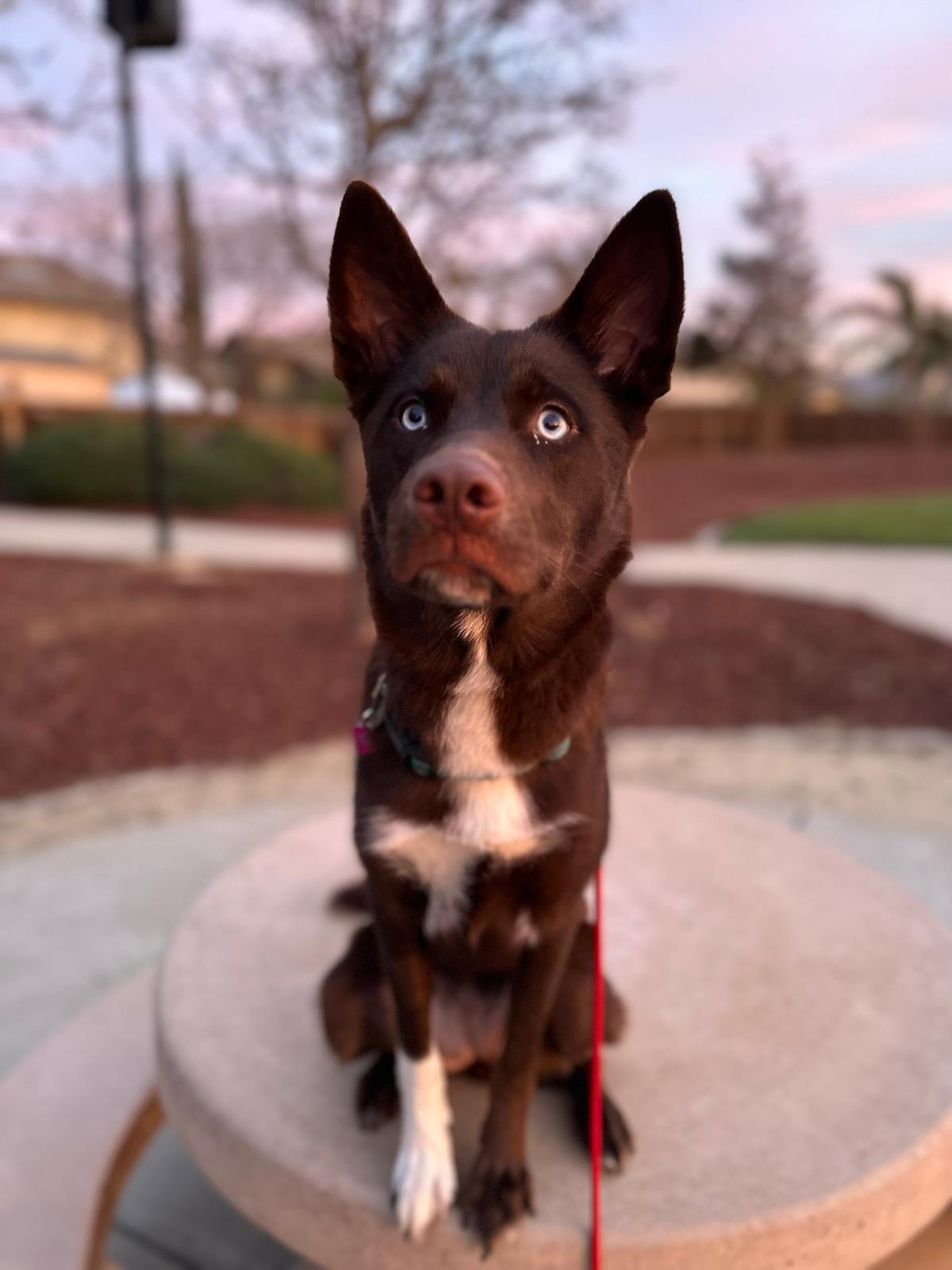Teach Your Dog to Sit
2023-02-07

Capturing- any time your dog sits on their own, give your reward marker and give them a treat, lots of pets, a valuable toy or verbal praise.
Luring into Sit:
Bring your pet into a quiet area with little to no distractions.
Bait your hand with an extra tasty treat without letting your dog see you do so.
Present your hand just above your dog's nose. As your dog starts to sniff the treat, slowly raise the treat back over their nose and up between their ears; this will cause their head to tilt backwards. As their head tilts back, their back end will fold into a sit.
The moment your dog's rump touches the ground, give your reward marker and pop a treat into your pup’s mouth. When luring your dog into position, if at any time should their nose fall away from your hand, immediately say the No Reward Marker (“Eh-eh!”), pull your lure hand away and stand straight up. We are not punishing our dog because they did not sit, but because they did not follow our lure. Wait a couple of seconds and then try again.
Repeat this until your dog can reliably follow your lure hand into the sitting position.
Once your dog is in the sitting position, say your Reward Marker and but begin to deliver the reward from the opposite hand you used to lure them into position.
At this point you are ready to add your cue. Say “Sit” before you begin to lure your dog into position. Repeat this several times.
Begin to vanish your lure as quickly as possible. We do not want to teach our pet to only follow a hand with a treat inside of it. Start by trying to lure your dog into position without a treat in your lure hand. If they follow your lure hand without a treat inside into the sit position, great! Continue to mark and reward with your opposite hand.
Start to physically lure your pet less and less each time after your give your hand signal or verbal cue of “Sit”.
As your pup improves, you may begin to reward sitting on a random basis. Maybe the first sit doesn't get a treat, but perhaps the second or third one does. Faster responses and listening to the cue around distractions should always be rewarded with lots of treats and praise in the beginning. Continue to practice in a wide variety of different situations and environments. Try to keep distractions to a minimum when first working in new areas. Training Tips- Only say the cue “Sit.” one time! Do not repeat the cue.
If at any time should your dog regress during training, go back to step 1 to see where exactly they may have gotten confused.
It is important to work in low distraction areas to build the reliability of the behavior on cue before working around distractions.Increase your pup’s response time to your cue by applying a 'Limited Hold' rule. Start to only reward your dog when they sit within a set time frame after you give your cue. Start with 3-4 seconds at first. When your dog succeeds every time during your 'Limited Hold' rule you may raise the criteria and only reward faster sits.Gradually build the length of time your dog can hold the sit position by withholding your reward marker for a couple of seconds at a time.
Ready for Dog Training?
Tell Us About Yourself
Tell Us About Your Dog
Find Out How We Can Help
We know your dog is unique. Before making any recommendations, we need to evaluate your dog's needs.
Connect with a team member for more information